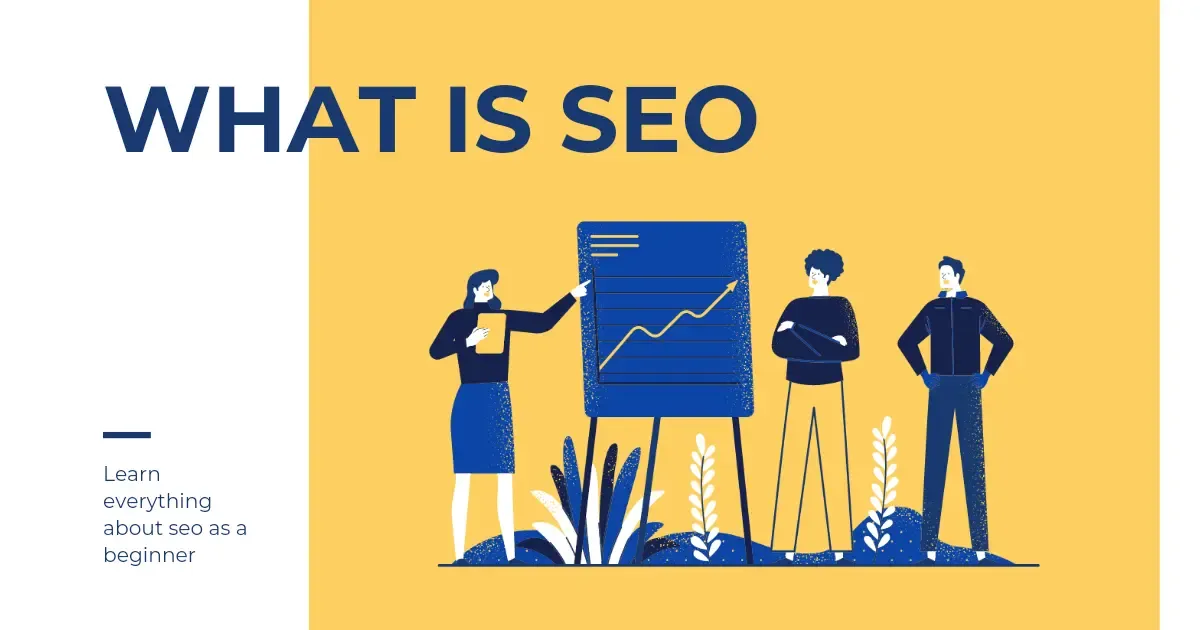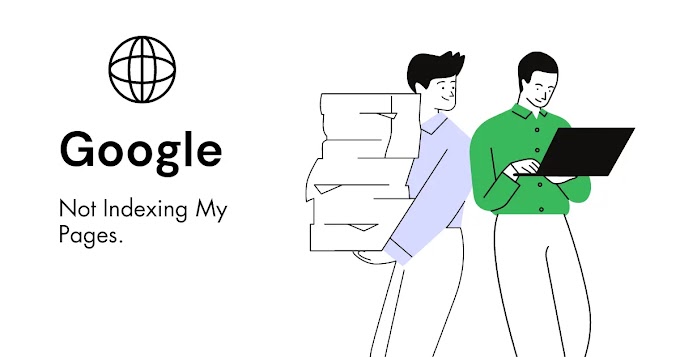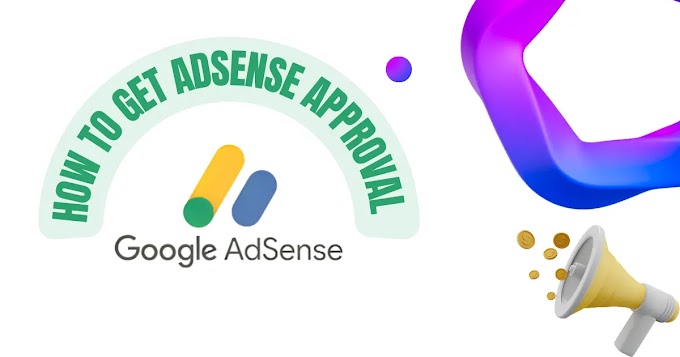Do you know what SEO is and what it is for? There is a lot of talk about the subject, but few people really understand what it is about.
Just to give you an idea, every month, more than 100 billion searches are carried out on Google alone. In other words, good ranking in search engines can make the difference between the success and failure of your Digital Marketing strategies.

But how to rank well in search results? Do not freak out! In this article, you will understand the concept of keywords and discover what SEO is and how it works!
What is SEO?
In everyday life, as soon as a question arises, it is quite common for our first action to be a quick Google search. It is not?
The same goes for millions of people around the world who use this search engine to even find products and services — which makes Google a gold mine for companies that know how to take advantage of this big opportunity.
However, you may have already noticed that most of the time, you (and all other Google users) tend to only pay attention to the first results of a search. So how can you get your brand to occupy prominent positions?
So, it is necessary to rely on SEO. This is the technique most bloggers use to rank their websites on top.
In practical terms, it's like ordering an Uber! Think with me: you need to turn on your cell phone's GPS so that the driver can find you. With SEO, it works the same way. It is necessary to make improvements to the content so that it can be found more easily by those doing a Google search. Got it?
Using SEO techniques, it becomes possible to optimize the website so that it outperforms others and appears on the first page of Google results, thus grabbing the attention of users with the very relevant content for what they are searching for.
Difference Between SEO and SEM
Before showing how search engines work, I think it's important to differentiate what SEO is from SEM — "Search Engine Marketing". Both terms involve Search Engine Optimization and are essential in Digital Marketing. SEO is more comprehensive, while SEM is more specific
SEO is a term that groups together all the different techniques used to optimize pages to be found in the first search results. SEM is the method used to indicate a Digital Marketing strategy created exclusively to promote a business, service, or product in search engines. Good SEO practices can be used to improve any type of pages or content, increasing the chances of them bringing organic (non-paid) traffic, even when there is no specific strategy to dominate search results.
SEM often includes the use of paid advertising, like Google Ads, to get more visibility in search results. It doesn't focus on dominating organic search results, which are the ones that come naturally, without paid ads. Instead, it's about using paid ads to stand out in searches.
If you intend to optimize your website's content just to increase the chances of it being found by other people, you will only be using SEO.
But if you improve the content, invest in a plan, separate a budget, and define a result to be achieved specifically through searches, you will be using SEO within an SEM — a "Search Engine Marketing."
How A Search Engines Works
It is not news to anyone that the Internet has become a large cluster of websites, which grows more and more with the inclusion of tons of information. Every day, new markets, competitors, and content appear to meet diverse interests and needs.
And to facilitate the connection between people and this large mass of information, search engines emerged. These are tools that rely on search automation, which scan the Internet and organize topics so that they are made available to users in the best way possible.
Google's algorithm uses three processes to carry out this survey and deliver the information to users. Take a look:
1. Crawling:
The first of these is crawling, the process by which Googlebot identifies new pages to send them to the search engine results list.
Googlebot visits each page, checks for new links or changes, and sends it for indexing, updating its information.
Although Googlebot is the most popular crawler, some generic terms used to describe it are:
• Robots
• Spiders
• Or crawlers
Another detail that many people overlook when talking about crawlers is that they evaluate the responsive version of the website first!
Also called the "mobile" version, the responsive version of a website is the alternative version to the one we see on the computer. It's generally displayed on cell phones and tablets.
This version is called "responsive" precisely because it "responds" to the format of the screen on which it is being displayed, adapting or removing elements as necessary for comfortable viewing by the user.
Taking great care in structuring your website for the mobile version is essential because robots can determine whether a page will be good or bad for a visitor. This can impact the speed at which the page gets indexed in search results.
2. Indexing
This is where the magic happens. Indexing is the next process in which Googlebot performs the analysis and processing of all new and changed pages, including them all in its index.
Information about the website's content, publication date, title, description, performance, region, author, and structured data is indexed.
Once the content is finally indexed, it becomes a part of the results to be displayed in search engine searches.
Note that indexing does not occur uniformly across the internet, which means that Google results may not always match Bing's results! You'll understand why shortly.
3. Search
Finally, we come to the third process - the search itself.
Every search engine operates based on the same principle that SEO techniques can be advantageous for a business in a Digital Marketing strategy. However, each search engine has its unique way of storing and retrieving results.
.webp)
These choices have a direct impact on the positioning/ranking of a result on the search page.
Google alone uses more than 200 factors to determine which content appears first and which appears last!
The same Google ranking factors are not the same as those used by Bing, which explains why content appears at the top of one search engine but at the bottom of the page in another.
Knowing these differences, it is possible to create an SEM (a Search Engine Marketing plan) for each search engine where your ideal customers spend the most time.
The general rule to improve the positioning of a website in any search engine is to ensure that the content is:
• Harmless (does not arouse hatred, controversy, or violate laws).
• Valuable (it genuinely answers the question it aims to clarify).
• And easy to consume (taking into account the website's design, the clarity of the content, the use of images, etc.).
If you keep these three things in mind and do good SEO, your content is more likely to show up at the top of search results.
I'll talk more about positioning factors soon. First, we need to talk about the algorithms!
Google Algorithm Update
As competition for good ranking in search engines only increases, Google needs to constantly update its algorithms. In recent years, it has been further improving its indexing tactics to present the best results to users.
The last update carried out is related to the relevance of websites and their content(spam update): Later on, I'll talk about all of this in more detail!

The days when you could simply stuff content with keywords to secure a top spot in search results are long gone!
The reason for this change is the fierce competition for good positioning, which compels Google to continuously update the algorithms responsible for crawling, indexing, and ranking websites.
As Google's focus is on user experience, one of the major updates was the one I explained in the previous section: giving indexing priority to sites that perform better in responsive versions.
However, as much as it is a fundamental factor, responsiveness is not everything, much less just using the correct keywords!
What Google's current algorithm takes into account when positioning content can be summarized by E-E-A-T:
• Experience;
• Expertise;
• Authoritativeness;
• Trustworthiness.
Experience refers to how much practical experience an author or company has about the answer they share. Giving health tips without a certificate in this area is something negatively evaluated by the tracking algorithm — something that will considerably reduce the chances of the content ranking well in search results.
Unlike experience, expertise measures how much content is filled with valuable information, with references to solid data, and how clear or well-produced it is.
"Authoritativeness" is how much the person who created the content is respected and known on the Internet compared to others who write about the same topics.
It is notable that the more experience and expertise a name has, the more likely it is to appear in the results within the niche in which it operates because it will have accumulated authority for this.
Following these EEAT guidelines when creating content with SEO will help your business survive algorithm updates with a greater chance of retaining the positioning it has achieved so far!
However, every time there is an update to search engine algorithms, especially Google, it is normal to notice a fluctuation in rankings within the 2 to 4 weeks following the changes.
If your site has been affected by an algorithm update, don't lose your temper; make sure to update your content.
What are SEO Ranking Factors?
Google does not disclose the most relevant factors for its crawling and indexing algorithms, which, as I mentioned, encompass over 200 elements. This implies that there are several aspects to be considered, and the details can make a difference in positioning in search results.
While they all have relevance, it is common knowledge that Google's algorithm gives priority to some of them when ranking for a specific query.
One of these priority factors is the SERP (Search Engine Results Page)! Influencing the SERP as much as possible boosts content to the top positions and increases the click-through rate.
But a good SEO strategy must take each of the components into account so that they work together. With that in mind, I have separated some of the main elements that you should pay attention to in order to improve the ranking of your pages:
1. Content Quality
When developing an SEO plan, this should be your top priority, even if Google doesn't talk about it. The first and most important factor of all is the quality of the content, which is the relevance that your page has for a given search.
When creating content, it is necessary to deliver useful information that truly meets the user's demands and answers their questions. It's that simple!
Remember that good content is not only used to guarantee a good Google ranking, but also to generate authority and bring greater trust to users who pay attention to what your brand publishes.
Copying and pasting is a very common mistake made by beginners. If you do it consistently, Google will penalize your domain.
2. Responsiveness
Much of internet browsing today is conducted through mobile devices, and Google is always concerned about its users' experience.
In fact, Google itself has already stated that it prioritizes the positioning of sites that are mobile or responsive (mobile-first). This emphasis arises from the recognition that it is crucial to provide the best possible experience, so never forget that!
3. On-Page SEO
On-Page refers to all the changes made within your website's pages. These changes are favored by Google's algorithms as they help search engine robots understand your page's content, improving SEO.
As already mentioned, on-page SEO is about content quality, keyword optimization, URL structure, and image optimization. Internal linking, meta description, and image alt text are also important things to do to improve your on-page SEO. Here's a detailed article on On-Page SEO.
There are several elements that must be checked. However, I will only list the main ones:
• Page Performance
Another very important point for ranking a page in a search concerns its performance. If your website takes more than 3 seconds to load in a browser under normal internet conditions, Google will not rank your website for damaging the user experience.
In other words, the design of a page is fundamental, but loading it with heavy images and several GIFs may not be a good idea in terms of performance. This must be taken into consideration when building your website!
If you're struggling to get a PageSpeed Insight score above 90, then you should read this.
• Website Architecture
All information on a website is read by Googlebot. It expects there to be a certain logical order of content, and the lack of this organization can make it difficult for the algorithm to understand the available content. This, in turn, has a direct impact on ranking.
The way information is structured on a page is crucial. It affects how people navigate your site, understand your content, and their overall experience. So, it's no surprise that Google considers this when ranking websites.
To make Google happy, follow a logical order. Use headers, body text, footers, titles, and subheadings (like H1, H2, and so on). Also, use bold or big fonts to highlight important ideas in your content. This helps both Google and your readers.
When a user enters the page, the titles and subheadings already provide an idea of how the information is divided and where the user can find what they're looking for. We call this 'scannability' – a simple organization that helps the reader understand the content architecture and allows for more fluid reading.
Another point to check is the meta description. It's a simple and concise paragraph that provides a brief overview of the page's content, informing both search engines and blog visitors. When you don't create a meta description, Google generates one during indexing, but it's not ideal.
The meta description is displayed below the title in the search results bar and can directly influence the user's decision on which link to click when performing a search. Finally, another essential feature for On Page SEO and an ideal architecture is the use of keywords in strategic locations on the page, as search engines identify them when indexing a website 's content .
They are fundamental, but remember that you need to pay attention to the number of keywords used, as too many can harm the quality of the content and make your page fall in positions, as it loses relevance.
4. Off Page SEO
An SEO strategy is not just carried out within your website, it is possible to carry out actions outside the domain to generate more authority and draw attention to your pages, resulting in relevance and improving rankings .
• Backlinks
Something common to carry out this activity is partnerships with other authority domains to publish articles that contain links to your website.

The number of links pointing to your pages has a huge impact on Google rankings. The mechanism considers that citations of your content in other places are like votes of confidence, which demonstrate that other people believe in what you present and find your content valuable.
This directly impacts your website's authority, indicating that it's seen as a credible source in a particular subject area due to the links you've created.
And, much like receiving links, linking to other authoritative domains also enhances your relevance. When you include references to other websites known for their online authority within your content, Google recognizes that your page relies on trustworthy sources and gives your domain more credibility.
• Domain Authority
There is an important point to understand when working with an SEO strategy: it is effective, but the results are obtained in the medium and long term. In other words, you need to be patient and consistent so that the desired positioning is achieved.
This happens because another well-regarded criterion when ranking pages in searches is domain authority. There is a mix between the amount of time the site has existed and the relevance of its content to users.
Each page evaluated inherits the authority of the domain on which it is hosted, so it is important to work not only on some content that is believed to be the most valuable, but also to guarantee the SEO of the entire site.
The score for authority ranges from 1 to 100. The higher the score a domain receives, the higher the Domain Authority, making the site rank better in relation to other pages with lower authority.
If you are in the planning phase of your website, don't waste time getting it up and running, even if it doesn't have much content yet. Once the pages are on the Internet, they will begin to generate authority. (Domain authority is not a ranking factor but it indicates how well a website can rank in first pages.).
Please note that domain authority is not a direct ranking factor. In this context, when we refer to domain authority, we mean the overall authority of your website, considering factors such as content quality, expertise, age, citations, and more.
• Social signals
Google still does not take 100% of actions within social networks into consideration for its ranking . In other words, it doesn't matter if you have gained a wide range of followers, likes or shares, this will not affect your content's positioning in searches .
However, social networks can indirectly help with an SEO strategy:
• Improve company exposure and brand recognition;
• Increase brand mentions and visibility on the Internet;
• They allow you to create an audience and direct them to the website, bringing visibility to the content.
Good social media profiles and a solid strategy can generate good traffic to your website, helping you present yourself as an authoritative domain on the network and demonstrating to search engines that your content is relevant to the users.
• Brand Mentions
We've already talked about backlinks and how important they are for your company. However, simple brand mentions are also interesting to generate authority and create relevance. For this, just a citation, instead of a link, is already valuable.
Google's algorithms are increasingly advanced and are capable of reading and understanding when a quote is referring to a certain brand, identifying the context of that quote, and analyzing whether it is positive or negative.
For example, if there is a discussion on a forum or blog about your brand, Googlebot will be able to identify these citations involving your domain, and this will influence your authority, either positively or negatively.
5. Technical SEO
As we know that SEO is no longer just about keeping an eye on keywords and that the focus of search engines is on the user experience, the best alternative to ranking in the first results is to apply Technical SEO .
When crawlers can easily navigate through all the content on the site, they have an easier time indexing the content properly.
Some of the Technical SEO factors capable of facilitating content indexing involve:
• The website address on the Internet.
• Its loading speed.
• The page's security certificate.
• The structuring of saved data.
• And even structuring the code that displays the layout!
Understanding these Technical SEO factors might seem rare and complex, but when you create a website with SEO in mind, it can make a significant difference when competing for the top position in search results!
The role of keywords in SEO
One of the most important factors for good search engine positioning is the correct choice of keyword. In short, it is the search term that the user searches to reach a page. For example: someone who needs to buy running shoes might search for the term "best running shoes."
Keyword Types
• Head Tail
Most of the time, we call head tail keywords those that are shorter, with one or two words, and that represent the segment as a whole. These are something generic, which could be broken down into various content and with different directions.
At first, when we still don't have much knowledge about SEO, it may seem like a good idea to invest in this type of word. After all, when we do searches, we can see that they have a large number of searches.
However, in addition to high volume, competition is also a factor. This can make it difficult to rank well since there's fierce competition from domains with high authority on the Internet. This is a common mistake made by many people who are still at the beginning of their SEO journey.
• Long Tail
Since very short search terms, such as "smartphone” or “refrigerator”, have great competition for ranking, the concept of long tail was created, which aims to use longer and more specific keywords to target in your content, like "Best smartphone for gaming," or "refrigerator under 20,000."
Still using the example of running shoes, we can see in the image below that the term "trail running shoes" offers a good opportunity. After all, it is a shoe aimed at a specific type of terrain.
SEO Tools - How To Utilize?
Returning to the example of running shoes, I used the two tools mentioned above to understand the search behavior related to the term. Check out:
Using Semrush to Research Keywords
When searching for the term "running shoes" within the tool, we found several filters. You can sort by:
• Volume of monthly searches;
• Cost per click (CPC);
• Keyword difficulty index (KD);
• And SERP (search engine results page related to the term) features.
Using Google Ads Keyword Planner
Now, when you search for the term "running shoes" using Google Ads keyword planner, you'll see a slightly different dashboard.
Leaving the visual part aside, the commands are practically the same as Semrush. It is possible to sort by average monthly searches, competition, and bid values for ads linked to the searched keyword.
Taking into account the two tools used to query the term, the main difference was in relation to the number of related keywords: the Google Ads keyword planner showed a greater number of related words and also with higher monthly searches.
Whichever tool you use, just have the resources to filter and sort until you find the ideal keyword to use!
But what is the ideal keyword for my business?
It depends on your company's objective: you can decide to compete for positions taking into account the competition (easier to gain positions) or the volume of searches (greater potential audience to be reached).
What to do after choosing the keyword?
With the correct term in hand, you can choose between different strategies to explore it. Check out some options below:
• Product page: you can optimize the contents of a product page by applying the chosen keyword.
• Advertising on sponsored links: you can also create ads that will be served when users search for the keyword you chose.
• Create content: another possible strategy is to invest in content that addresses a topic related to the keyword.
Why adopt SEO?
The Internet is an environment full of opportunities and offers the most diverse demands for business. However, to stand out, you need to have visibility.
And a good SEO strategy can take your pages to the top positions in search engines. See the benefits:
1. Increased traffic
Using SEO techniques has a direct impact on your website's traffic. An increase in the number of visitors means more business opportunities. This happens due to the adequacy of your content with what Google considers to be relevant.
When an SEO strategy is done well, you can create a source of lifelong organic traffic.
This is the type of combination that turns a brand into an authority for search engines and a safe haven for the type of people looking for what you sell!
Increased traffic in this way has a gain not only in the quantity of people visiting the pages but in the quality (and potential) of these people becoming buyers of the services or products that you offer.
2. Lead generation
It must be said that this increase in traffic does not happen across the board: the increase is in the number of the right people for your business. The search for a certain subject and the interest came from them, and not from an advertisement presented to them. Only qualified leads are attracted.
When we use other strategies, such as facebook ads or any other traditional ads, we end up attracting the attention of people who are not necessarily our target audience, which can lead to a bad experience and negative reviews on the Internet.
3. Greater return on investment
SEO is a strategy known for ensuring increased ROI when well implemented. We see a significant improvement in conversion rates, as we start to attract many more people who are part of the brand's target audience — consumers with a real interest in purchasing their solutions.
This means that all investments made to apply SEO techniques return profitability to the company, since the greater the authority of its pages on the Internet.
Don't forget that SEO strategies must be designed in the medium and long term. The results may take a while to appear, but if everything is done correctly, they will come!
4. Increased website or blog authority
Finally, we have increased authority, one of the most important outcome of correctly using an SEO strategy, as it makes your website overcome the barriers of the Internet and begin to be part of people's lives.
When a customer comes across a friend or family member going through a certain problem for which your brand has the solution, they remember to suggest your company and its content, as they trust your authority on the subject. It's proof that relevant and quality content makes your brand become a reference within your market niche.
But be careful: don't think that executing one or another isolated strategy will bring results. Planning is necessary so that all actions are interconnected and the results are accurate!
SEO metrics and indicators
Talking about traffic is important, but the quality of traffic matters much more!
One of the ways to qualify your website's traffic through SEO is by using analysis tools capable of tracking user behavior and showing you what needs to be improved.
Some analysis tools are quite popular, such as Google Analytics and Google Search Console, but there are many others.
The main thing is that they facilitate your access to the metrics that indicate:
• How many people arrive at your website through organic traffic.
• What is the click rate within each content on your pages(CTR)
• How many people are being converted into frequent visitors.
• And also, what is the bounce rate of the pages with the worst performances.
From an analysis of these metrics, the adaptation of your SEO strategy becomes completely data-based — far from guesswork!
Once you have a database of user behavior, it will be easier to understand:
• What problems do they face.
• What desires do they harbor.
• And how your company can satisfy them!
This article is designed for beginners, and if you're interested in reading more beginner friendly articles like "what is SEO," you can find them in our "digital marketing" and "blogging tips" categories.









